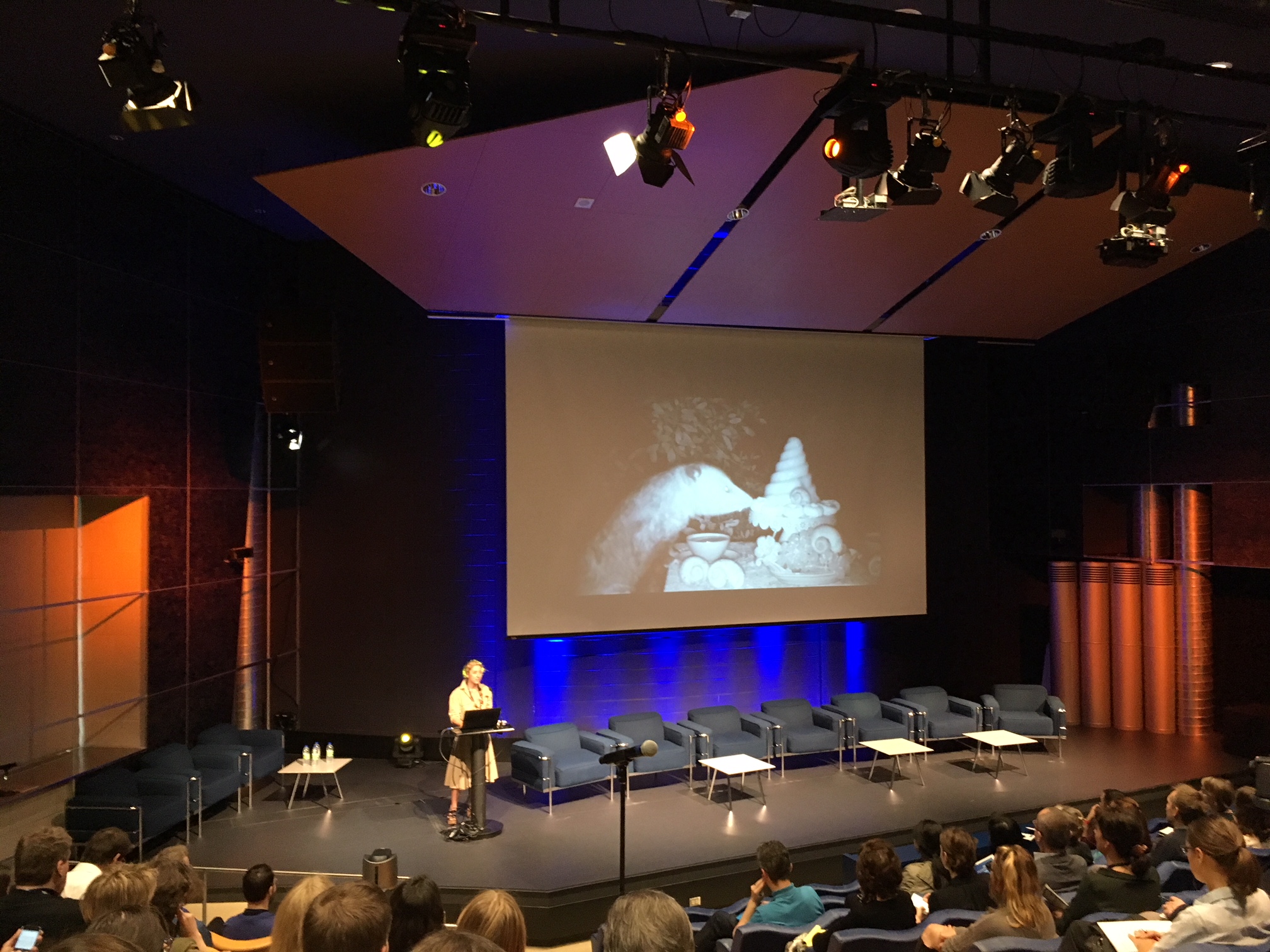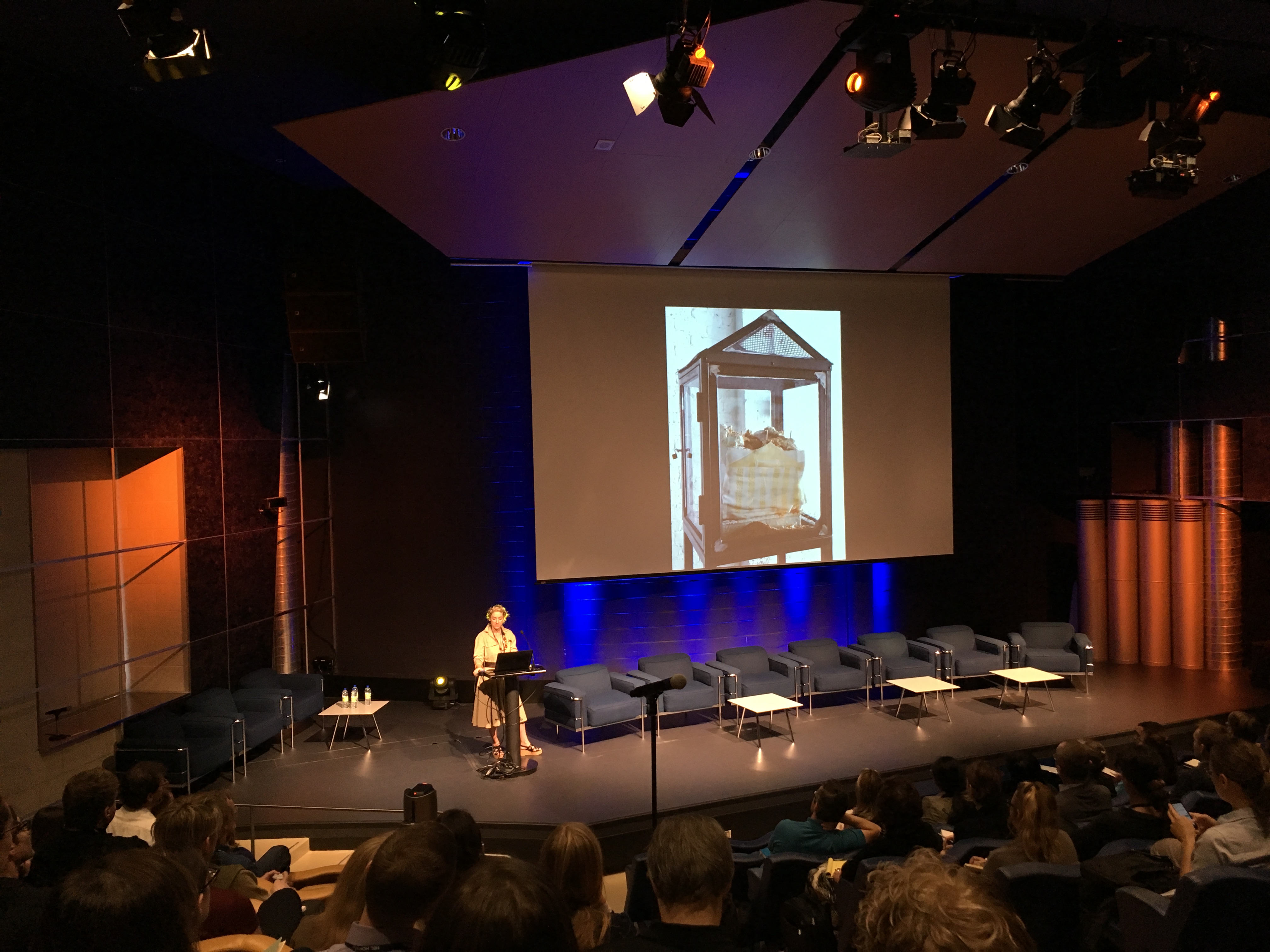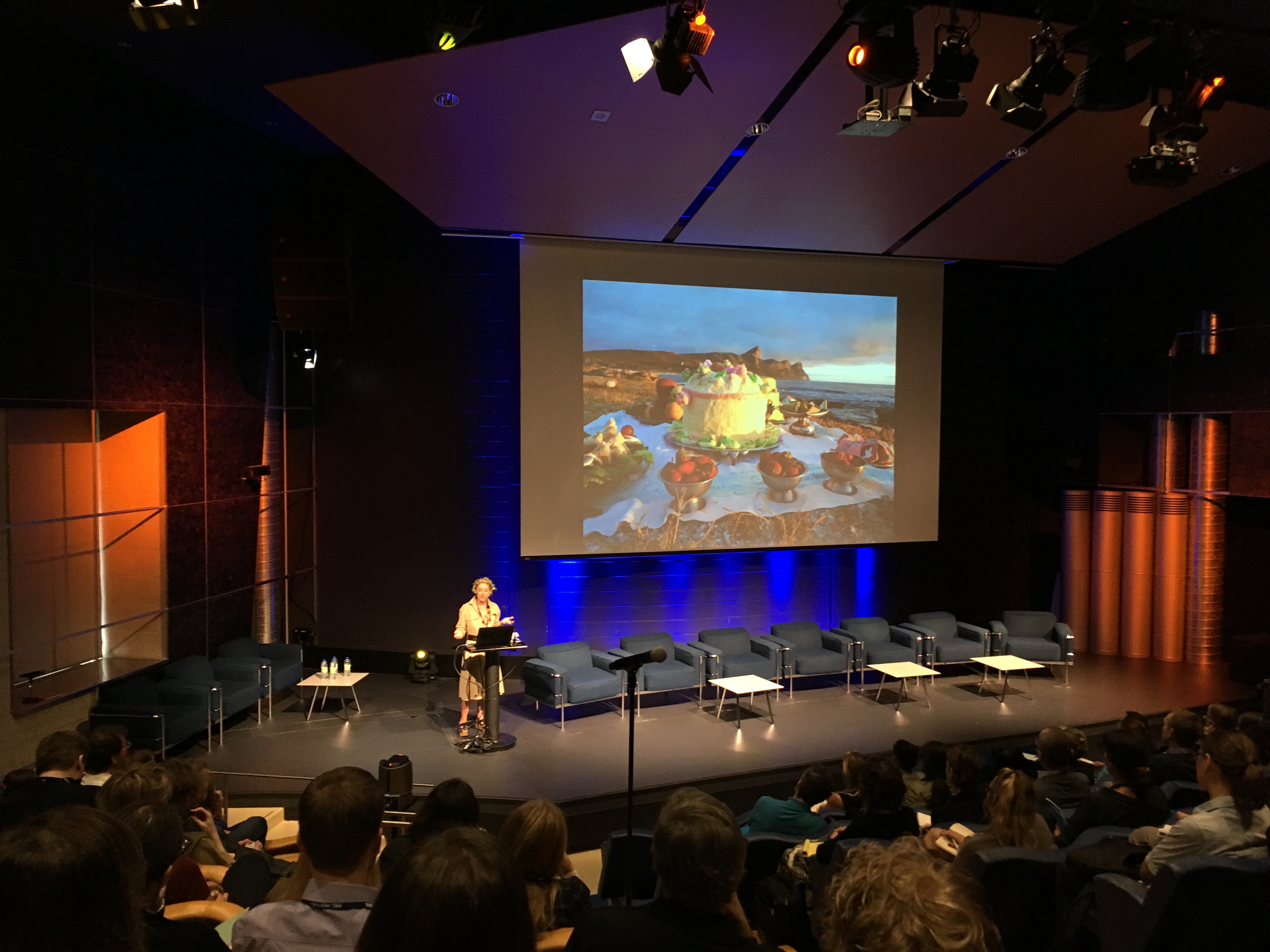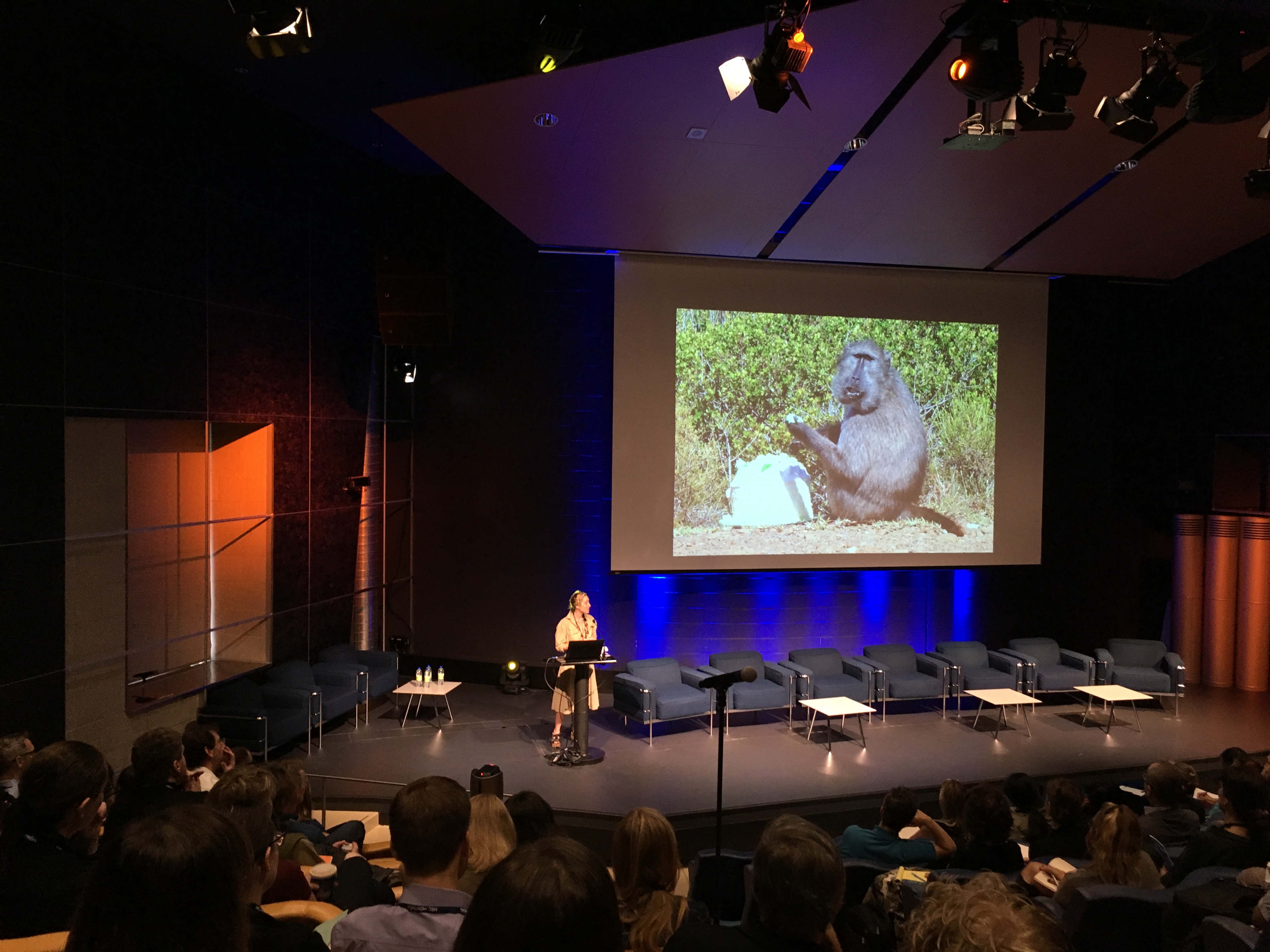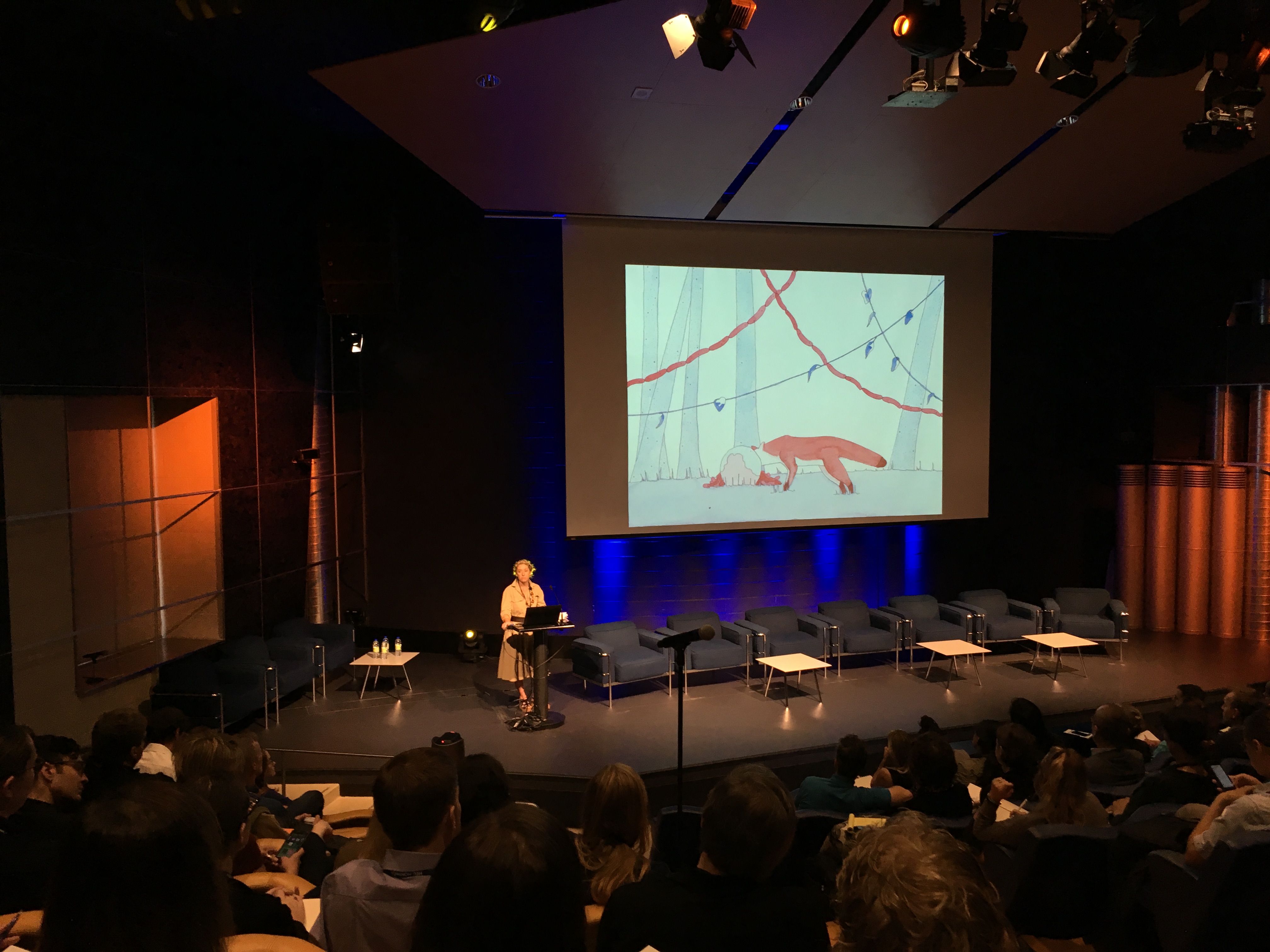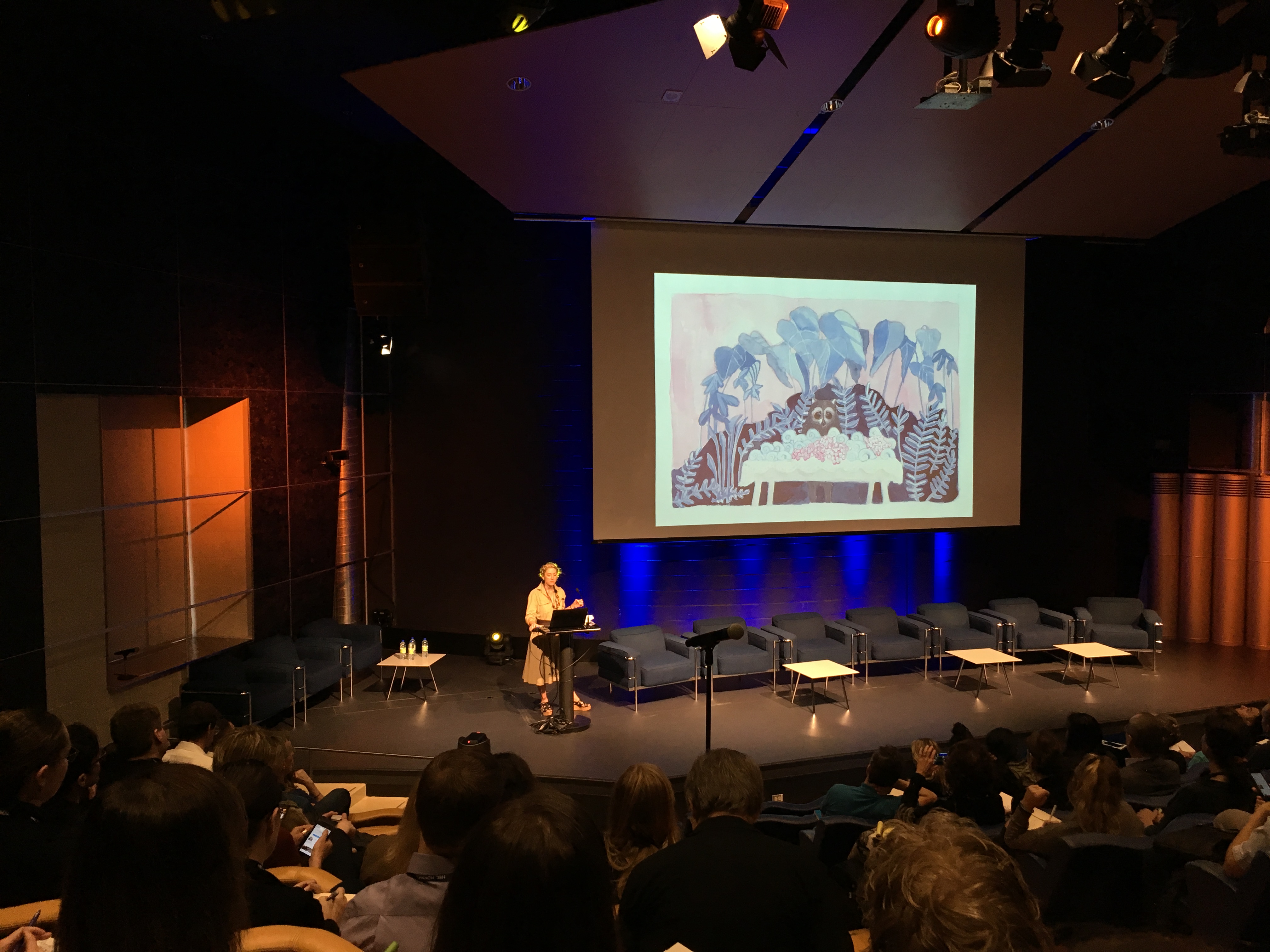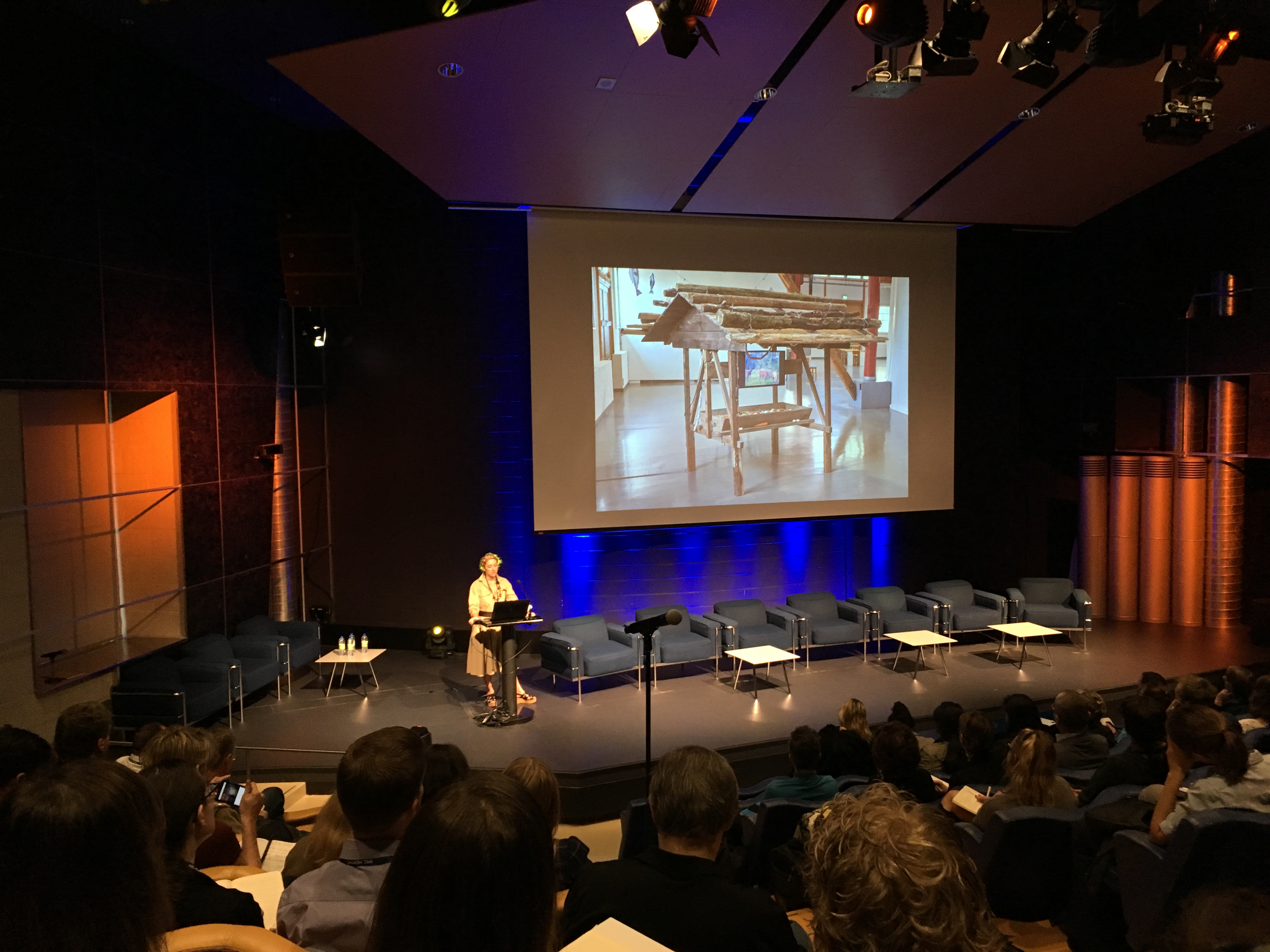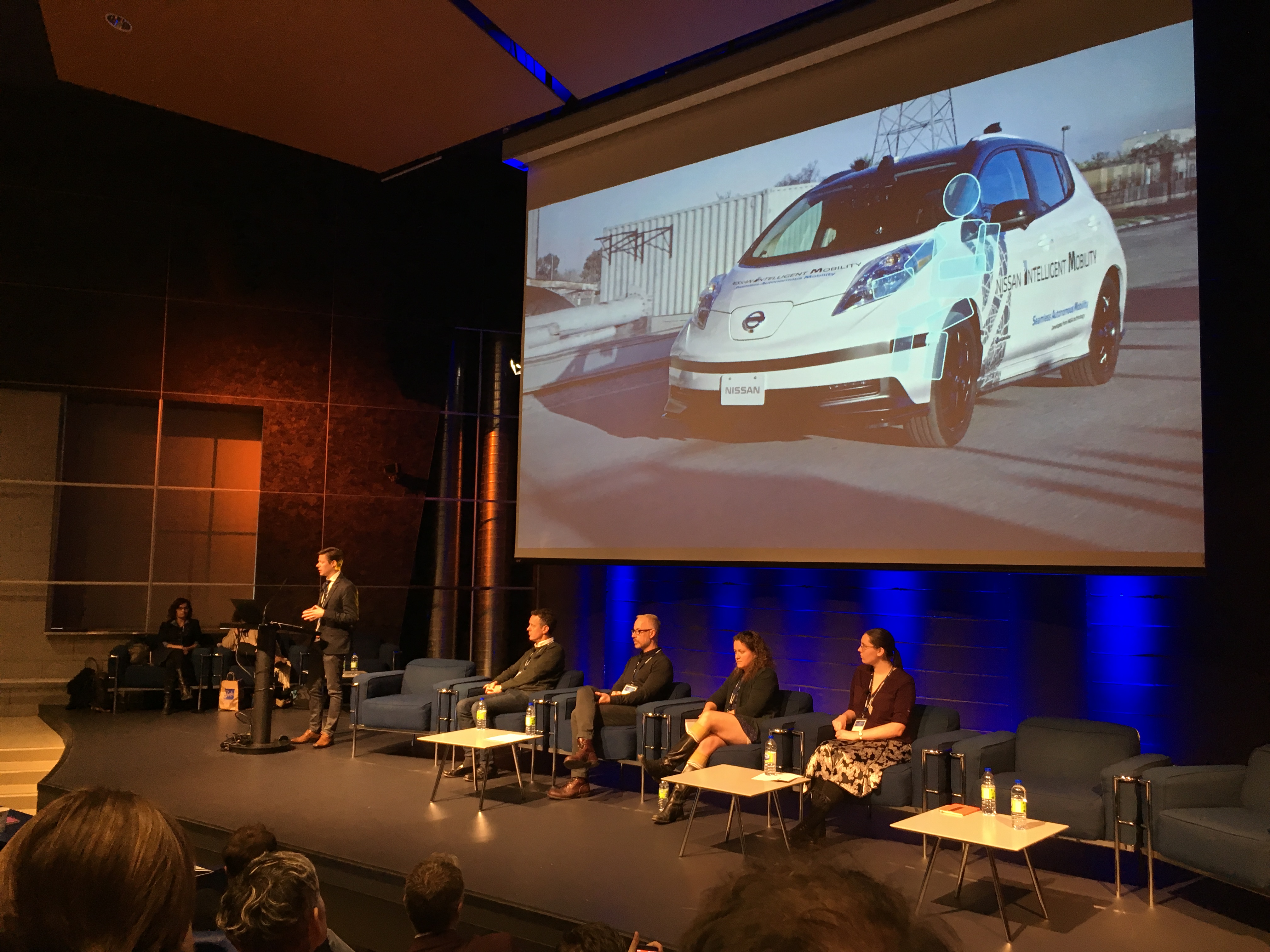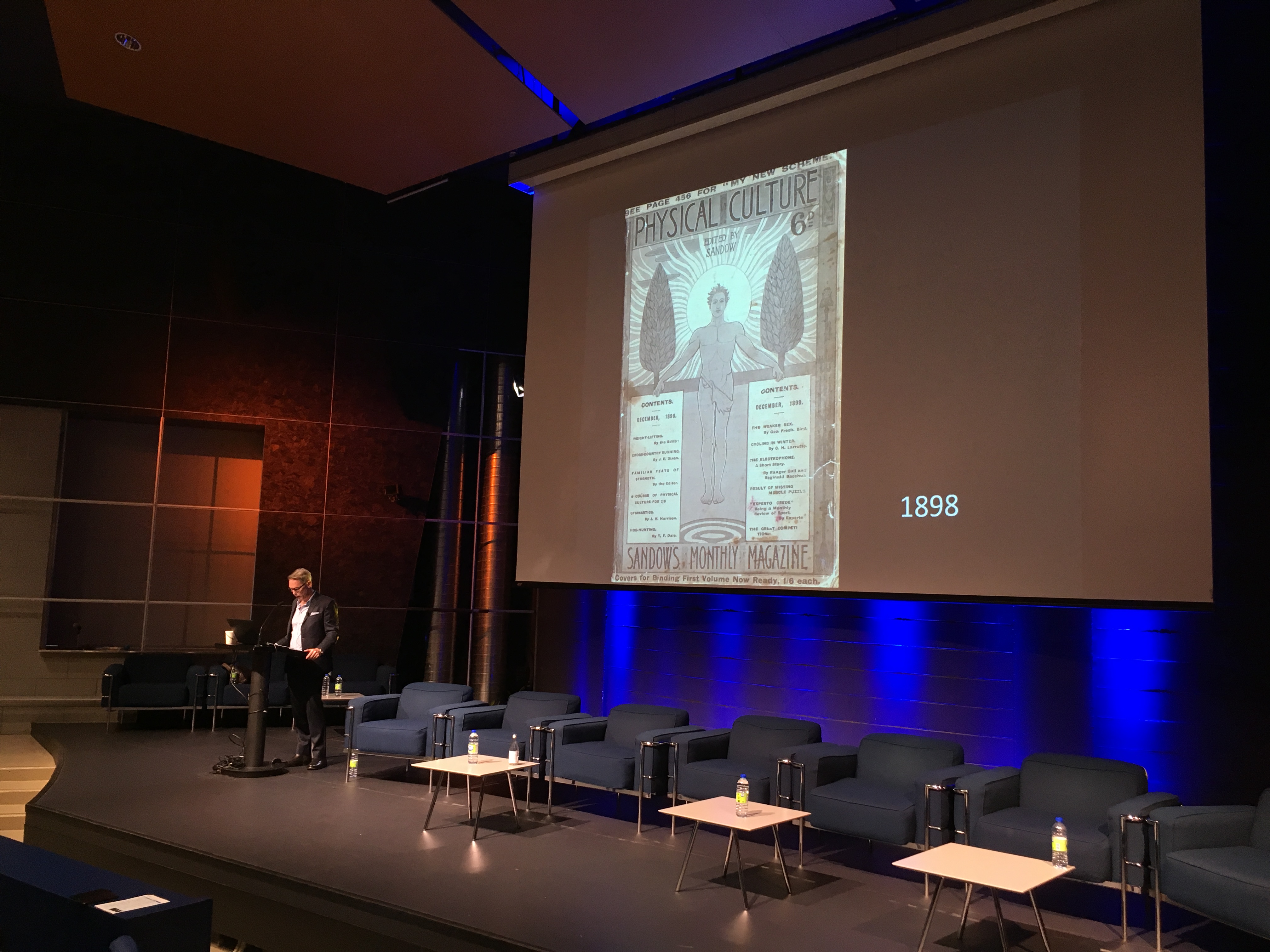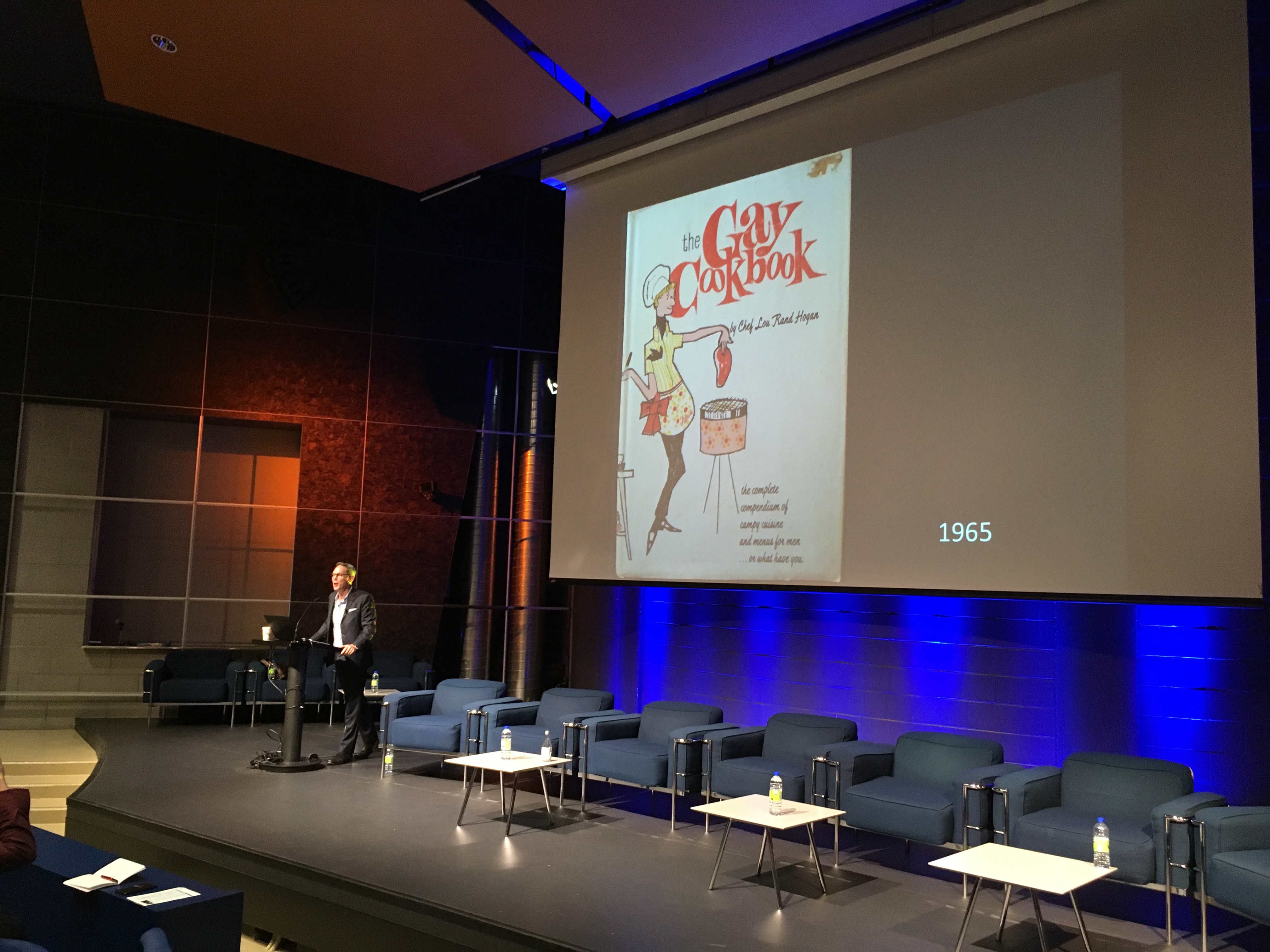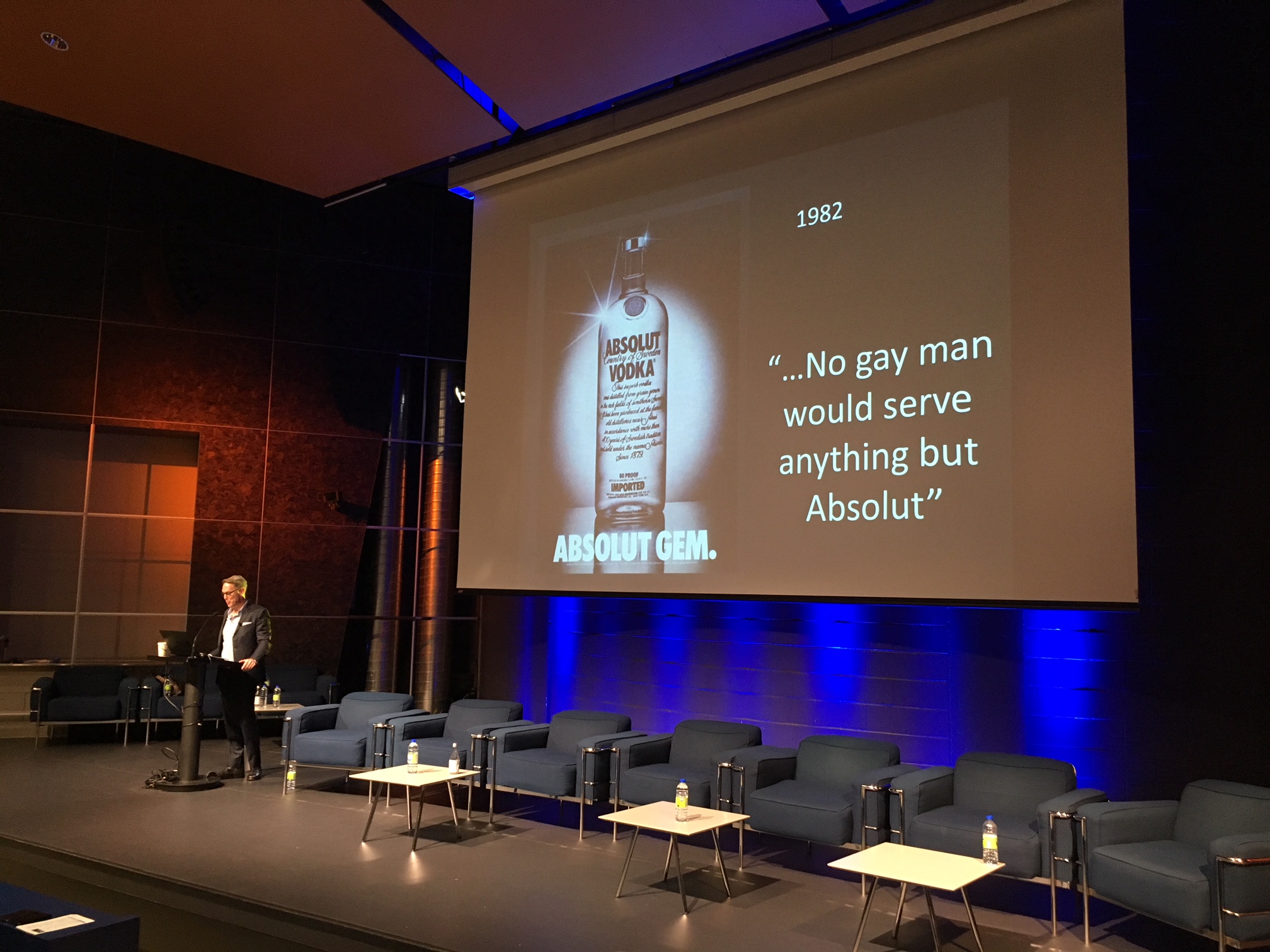Epic 2017 day 2 conference notes
These are my notes for Day 2 of the EPIC2017 conference.
Dana Sherwood: Culinary Habitats and Feral Cakes
When you invite the chaos of nature as a collaborator there’s no telling what’s going to happen
Although we live in the anthropocene era when everything has been manipulated by mankind, there’s something hopeful in animals just being animals
Work has always been culinary and very experimental
The Ladies Society of Alchemical Agriculture, 2009 - combined terrarrium with a culinary delicacy that represents that particular area of the US (i.e. Maine lobster, NY hot dog, etc) that over the three months of the exhibition, will decay and become it’s own ecosystem.
The Confectionary Wonders of Buffalo - cakes made in shape of Buffalo’s iconic buildings and left to survive the buffalo winter. decay of cake mirrors decay of the city.
Then, became very interested in what would happen if live animals were part of the destruction.
So, next project was Bacchanal
~An amazingly funny story about the opening of that exhibition that’s too long to relate here~
Learnt an important lesson: Animals almost never behave the way you expect them to, and usually they do the exact opposite
After Bacchanal, learnt better than to rely solely on nature guides to what animals will eat: For next project, did as much research on youtube watching vids of baboons eating pizza etc as reading nature papers on fruits, nuts etc are their natural diet
Picnic at Cape Point
Went to set up picnic really early, but no baboons came. so packed up and drove around and found baboons - but along with a lot of tourists. so, dropped cakes on side of road and circled back to observe.
One tourist: “Oh My God that babooon just stole someone’s birthday cake!”
I had managed to salvage something from this project but it wasn’t the theatrical comedy I had imagine.
Because there are no longer divisions in our territories, we all share the same crippled space. We become companion species with animals. Food fuctions in her work as a metaphor for the ways in which the nature states are turned into culture
She tries to do justice with her animal collaborators in creating meaning together. Became a mediator in nature and culture, along with all the pitfalls and lessons learnt along the way.
Work now has two parts: field work, and in studio, where she edits video, creates sculptures and makes drawings.
Reflections on nature have affected the way she does her drawings.
Previously, was very contorlled. didn’t want any mistakes. Wanted it very tight.
But in watching animals, found so much beauty in vulnerability and unpredicatiblity in them. Projects that go wrong are the ones that have most feeling and are most memorable.
Now, she doesn’t allow herself to spend so much energy making a perfect drawing. Just paper, paint and the most meaningful one minute sketches as possible. Even though they are full of chance marks, they didn’t look like mistakes. They look free. She no longer had a headache after spending hours painting.
You have these preconceptions, and you always fall trap to anthrpomorphic thinking. It’s so ingrained about how we think about nature that it’s really hard to get past.
Denmark proejct: The wild and the tamed
Even though this project was a failure, it highlights something aboout wildness. there’s something hopeful about animals just being animals. Converted field work into a sculpture+video installation
The consistent theme is control. Animals have their own subjectivity. We love nature, but the moment they come into our territory or encroach, we try to dominate and anthropomorphasise and control it.
Papers: Making Culture Visible
Themes: hope, freedom, democracy and ownership.
To Have and Have Not: Exploring Grammars of Sharing in the Context of Urban Mobility.
Anna Zavyalova • Stripe Partners
Rooted in work with Renault-Nissan. Research carreid out in Sao Paulo, Ahmedabad, London
Paper focuses on pooled rides and perspective from riders. Infrastructure has
Tensions that come up: Private vs Public
car was initially designed as a private space - affordances suggest privacy vs public transport designed to be shared.
Also tension around aspirations, which differs from place to place. Some places it’s about ownership, others is about arriving in a car.
Another tension: Teleological vs Experiential
It could be rational and make sense for people to pool resources and to share rides, but sometimes the determining factor is emotional and not rational. So thinking like: Rather be stuck in hot bus with no AC rather than carpool.
Final tension: Freedom and Ownership
uncoupling of car as signifier of freedom. This is a generational thing. “You never forget your first car” - it’s about coming of age.
But, for example in London with younger people - “Car is a responsibiltiy I don’t want to bear” car=responsibiltiy and burden and stress.
Getting the grammar of sharing right: studying mobility through the eyes of drivers and passengres.
Surveillance, Technology, and American Conceptions of Freedom
Michael Griffin • Amazon
Work came out of study on cameras + phsyical security information management systems at a school. (cameras, locks, speakers, etc all connected to a central command system). When installed - worked in deterring theft, alerting school admins to a person who needed help, etc
The director who had installed it had previously experienced a school shooting. When speaking about the building security system, he said: “I think this technology enhances our freedom. That’s just my thought.”
What did he mean?
For us, surveillance goes back to idea of panopticon: bentham and foucault. But in interviews, references were to 1984.
Sometimes when companies install surveillance they say they don’t want it to be obvious - no one wants to be Big Brother. But other times, it is made explicit, partly as a deterrance.
Most discussions of surveillance is grounded in the belief that there is a trade off between freedom and security. Actually often 4 dimensions: privacy security control and trust - but also, often, they are signifiers that go undefined: empty signifier
More helpful then to think about Ideology and Louis Althusser - imagined relations individuals hold about their real (material) conditions of existence; often expressed as common sense belief
Marx described ideology as assemblages - as imaginary, pure dream
Also Althusser: Interpellation - process by which individuals are hailed by, and thus made subject to, ideology. This is how ideology is formed. e.g. when police calls out ‘hey you!’ person can’t help but turn around. but in turning around, he is co-opted into ideology of state power and policing and social contract and all that.
So, going back to that phrase: “I think this technology enhances our freedom. That’s just my thought.” - what does that mean?
What does freedom mean? could be many things: valence - freedom to, or freedom from? sense - social conditions (freedom to vote, economic freedom, fre) entitlement - those who enjoys its blessings
Each of these sets up a different definition of freedom. i.e. “Basically, security is freedom from danger” Metz
Director was maybe seeing freedom as freedom from death, trauma, danger etc
But it is imporatnt to remember that, even then, surveillance is not only way of guaranteeing safety. i.e. Access to guns, etc
In installing the camera system, he himself has been hailed by an ideology that surveillance = freedom
From the Mixed-Up-Files of A 21st-Century Librarian: Scales of Power, Conceptions of Democracy, and the Public Library
Alannah Berson • University of Chicago
are they still necessary do they provide a service that can’t be replaced by current technology? how do we know what services they should provide? What do libraries do?
Internet+digitization: easy and cheap to keep records. also transfer of information (or goods) is cheaper - these lead to discussion of whether physical spaces like libraries+malls are still necessary.
They rarely do something so simple as providing a physical space for transmission of information
What is the conception of the library in the 21st century?
Most poeple think of a quiet place. they think of librarians as professional shush-ers. they think of the encyclopaedia sets
What if we question these ideas?
The reality of libraries is that they are not just there to help children learn they provide inforamtion to adults, and not just for infomration purposes - taxes, changes to local school curriculum, etc
They are also meeting places - places with toys for children while adults browse movies etc.
some even lend out board games and fishing poles
Not all do but most use limited budget to figure out what local residence want or expect from libraries.
Notion of Chronotope - idea that time and space affect a person’s character - becomes useful in analysing this.
There were large disparities in access. typically 3 groups of patrons organised by ‘time’:
Imagined low income person - based on assumptions and years of experience. Children - under 13. brought in by parents/siblings. often white and better dressed. parents often dropped them off and didn’t stay long Seniors - often people of colour. spent a longer time using a larger variety of services.
Places can also have an effect. for example in chicago, hyde park branch hugely affected by perception and assumption that it is in the South Side, even though its neighbourhood does not share the same economic conditions of the south side.
The collection does not reflect conditions. for example: largest collection of materials aimed at african americans even though other branches in south side have greater proportion of african american patrons.
The biggest thing that needs to change is the assumption that libraries cannot change. They have always been changing. Internet was not first technology that libraries ahve encountered.
Website and branch - not identical but needs to be studied as a system.
Seeing and Being Agents of Hope: Human-Centered Designers, Transportation Planning, and Drip Irrigation Kits
Emilie Hitch • University of Minnesota
How is hope a driver of change? Hope is not always passive. It can be aggressive
What if we understand the outcomes of ethnography and design as embodiments of people’s hopes – not just objects that serve a users’ needs?
In Minnesota highway project, addressing hope of the people in the corridor affected made visible that their hope is not just in the concrete highways and roads of the project, but in the design and decision making process. A year into project, one highway’s future remain uncertain, but for first time the Commissioner acknowledged past wrongs made in building earlier versions of the highway, and made public outreach and engagement - a minor part of the original public work project - into its own project.
Hope followed by action can be first step in making change a reality.
If we notice the dreams and hopes of others we can ask different questions about the design process.
Good Q: how do we avoid exploiting hope?
Autonomous Individuals in Autonomous Vehicles: Perspectives on the Multiple Autonomies of Self-Driving Cars
Erik Stayton, Melissa Cefkin & Jingyi Zhang • Nissan Research Center
What do we mean when we talk about autonomous vehicles? In particular, the word autonomous.
One answer is that ‘these cars will drive themselves’. But, autonomy also has other dimensions. For example, the autonomy of the people within the vehicles.
The human in the car haunts this image:
What if autonomous vehicles means that it enhances the autonomy of the people using these cars?
Study: Simulated experience of an automated car. Sometimes ran into obstacles like roadworks. in those cases car just stopped, and a remote human controller. people in the car had to navigate not just feelings associated with autonomous car stopping, but also the idea of this remote human taking over control.
asked people to ‘trun the autonomy on’ with a button. suggests: a) autonomy is figured technically, and b) autonomy is something that can be configured
Autonomy is not always wanted because it is often contingent on desire: When is trip being made? where are we going? why are we in the car? who is with us?
Textures of time, place and purpose matter to desire for autonomy. Car as a private space - willing to give up utility of autonomy to preseve taht Driving is a collective, shared activity.
How would vehicular autonomy affect the shared collective space of the vehicle?
What changes for the social role of driving? “Wouldn’t mind if it’s just me, but if wife and child are in car I would want to take control” - indicates driving as care work, of taking responsibility for risk. Full autonomy could threaten this expression of caring.
Investigating the practices and social meanings altered by autonomous systems is vital.
Ethnographic Film
How does this increase access to voice? How does this create opportunities for co-analysis? How can film be well-structured as polemic? Boundaries of audience engagement vs relevance+usefulness Risk of video becoming surveillance method to validate assumptions about consumer behaviour. Film as intermediary of two oppositional forces.
Andrew’s Story
Producer/Researcher: Nicholas Agafonoff • Real Ethnography Research project: insurance company wanting to investigate why people weren’t applying for disability insurance or dropping them soon afterwards.
Accepting that they will never be the same is their biggest challenge.
“At the moemnt it’s a defeatist message - if you give up hope then you get the money, but if you fight to get your life back to normal then you don’t get any financial support”
The film was disruptive because it showed how every part of the claim journey was broken.
I’ve seen empathy do nothing time and time again. Empathy has to help the client win. You have to come up with a bunch of commercial implications that’s attached to that empathy.
Seal - Ethnography as the First Stage of Design
Producer/Researcher: Michael Andrea • ReD Associates
A film on the process of designing digital services for transient populations in Myanmar and Thailand, based on in-depth field research.
Theme was global migration but Where is the design space? Many problems rooted in lack of trust, transparency and security + there is ubiquity of mobile device so, cold platform for securing agreements could be a good solution.
Michael Andrea: One of the intersting things is how to design products and services for populations you know nothing about. If you don’t take the view that you are therefore only qualified to design products for yourself and people like you, then you need a foundation of knowledge about the population. Film is very good for other people like you (who don’t know anything about the population) who you need to bring in and provide a foundation of knowledge for.
Ageing Gracefully in Singapore: An Interactive Journey
Producers/Researchers: Gabriella Piccolo & Michele Visciola • Experientia
“A key output of this work was a dynamic, interactive, and open-sourced map that contains 24 videos cross-indexed through the 8 personas they identified during their ethnographic research and analysis.”
Soon after we decided to create the videos, we thought that an interactive platform was the right way to communicate and better spread the voice of the participants. created a map so they can not just watch the videos but also read more about the research.
The Double-Edged Sword of Personalized Marketing
Producers/Researchers: Meg Kinney & Hal Phillips • Bad Babysitters
What happens if, or when, this cohort rejects the current paradigm in which their behaviors are sold in a marketplace for profit? What will they come to demand in return?
(audience laughs during the non-verbal bits - i.e. eyes darting sideways - clear that visual element of the film conveys information that transcripts/words don’t.
“The idea that every click is a transaction to be sold into this marketplace…”
“I don’t think this is our true nature”
“There’s a lot of pain and suffering that we’re not expressing.”
Have to let the participant’s voice be the thing that guides it.
Ultimate deliverable to the client was 6-8 vignettes of about 10 minutes.
It’s about workshopping it to the clients. half day/4 hour workshop: talk through the thoughts behind everything. if you get through, they invite you back to talk to other parts of the business.
Huáyì
Producers/Researchers: Yuebai Liu • Stripe Partners & Matteo Primiterra • Kinonauts
Film on the experinece of being of Chinese descent in Italy. It “does not aim to provide clarity on the topic, but to raise questions on how we are facing questions around integration and identity in Italy today.”
Started thinking this would be really easy because I’m Italian-Chinese, but found that I was projecting myself into the film. Needed to take a step back and let the people speak.
“We’re almost Italian, but always Chinese”
ALways asking why this needs to be in video. is this the best way to tell the story? could it be photo? or text? etc So for example: football scene or car scene - harder to explain by text or photo
Used social media, wechat and whatsapp to find the participants. Kept it quite open.
Sometimes performance is interesting as well - you can ask for performance: can you re-enact what happened then, etc: can get them to reflect on their past behaviour
Also people often don’t divide between ‘true’ self and performative self. we all wear different masks at different points.
Consumer Culture and Political Resistance: How Gay Entrepreneurs Sparked A Movement
David K. Johnson
Some of the most iconic civil rights battle of the 20th century have been over the right to consume: Birmingham 1963 - right to shop in downtown stores and use fitting rooms there Zoot suits 1940s - right to wear clothing contravening wartime restricdtions Greenwhich Village 1969 Stonewall Riots - Right to buy a drink in a bar Colorado 2017 - right to buy a wedding cake from a commercial bakery.
most discourse assumes political movement happens first and then marketplace is chosen as the arena.
But his argument is that marketplace and consumption is at the centre, and prior, of the political movement. Even though those in the movement and opposing it often downplayed/opposed this connection.
Process of appropriation.
Started with physique and fitness magazines: Crisis of masculinity due to urbanisation. Resulting in commercial ventures and media promoting fitness and bodybuilding. Led to ads offering models for art which were v successful but by its success drew the attention of the censors.
Within 10 years, editors of strength and health counted ‘20 little queer magazines cluttering up the nation’s newstands.’ One magazine - the homophile political magazine. Physique magazines had 10x the cirulation of the political magazines.
Even in analogue world, of 1950s-60s it was a conversational/two way conversation with letters to the editors etc. creation of ‘virtual’ community. US postal service was the internet of the 60s
mainstream fitness magazines that they appropriated were not amused and fought back. wrote ‘exposes’ showing that these were not read by women but men.
By the 1960s even the NYT caught on to what was going on…
Fact that these were gay magazines were not actually a secret - everyone knew.
Association of bodybuilding and gay culture continued until the 1970s, broken only by Arnold Schwarzenegger
Appropriation happened across many products - Something you could buy in every room:
-
Living room - coloured print/posters.
-
Bedroom/closet: Gay clothes: Ah Men. First gay brick and mortar business. “Sort of the Abercrombie & Fitch of the 1960s”
-
Bathroom: Cologne, towels etc
-
The Den: Gay books. George Quaintance studio for gay bookends.
-
The Kitchen: The Gay Cookbook.
Indicated these are not just consumer product but also a way of life and a community.
How was this community created? They actually shared mailing lists. Physique magazines shared mailing lists with the political magazines.
The political groups also borrowed technique of selling stuff to consumers.
Created a virtual/imaginary community. indicated that people were reading the same things, buying the same things, etc. Didn’t matter where you lived - you could get this through the US mail. Pen pal clubs. And although most images were of white men, the US mail wasn’t segregated.
A shared sense of the past. Grecian guild pictorial in particular, but they were all valorising a homoerotic hellenic history. nostalgic invocation of ancient greece as a way to legitimise their desires. The fitness magazines in 1950s-60s took that and gave it to a mass audience.
Came at a time when people were trying pathologise gayness, so by giving it a tradition and history, this was less a cover to hide behind but a weapon against those who would criminalise or pathologise gayness.
Some also tried to create a physical gay social space - local chapters of guilds. hold conventions etc.
Created a shared sense of oppression and defence of rights.
Postal inspectors - infiltrated mailing lists, made ‘educational visits’ to customer’s employers.
As fight in courts was being lost, postmasters turend to the public by appeal for people to report obscene mail.
Postmasters considered most of these images to be obscene because it promoted homosexuality in American society. Obscenity was not about the images but about the sexual orientation of its
Developed a rhetoric of rights calling for a collective response. the only way to fight these frustrated reactionaries was to fight on a national scale.
DSI had a publisher’s creed. DSI demonstrates both the vastness of this consumer network and how obscure it is. made money just by selling a directory to gay people.
DSI consolidated the gay commerical market in the 60s. They were the ‘gay Sears Roebuck’. Had 14 full-time employees. biggest gay-owned, gay-oriented business in the world
Mailing list so large taht they used IBM computer and cards to maintain it. US v Spinar and Germain 1967 - Indicted for 24 counts for obscenity. Court case focused on whether reading gay material caused people to become gay. They won.
They transformed the market - allowed for much more open displays of homoeroticism.
legal victory was pyrrhic because it opeend space for competitors to come in and DSI went out of business.
1950s+60s. A lot of central to both a gay polticial movement and a gay market. the two developed together and interacted with each other in complicated ways. Allowed gay men to visualise a community, create a shared social space, defeat censorship.
Was something that corporations didn’t realise until much later - 1982 Absolut ad.
Gay power - a term emerging in SF and NY in 1967 at time when DSI was winning its court case in Minnesota. Although political slogan, was understood as economic power.
Part of the reason why the movement became dominated by white men is because the market was dominated by white men.
